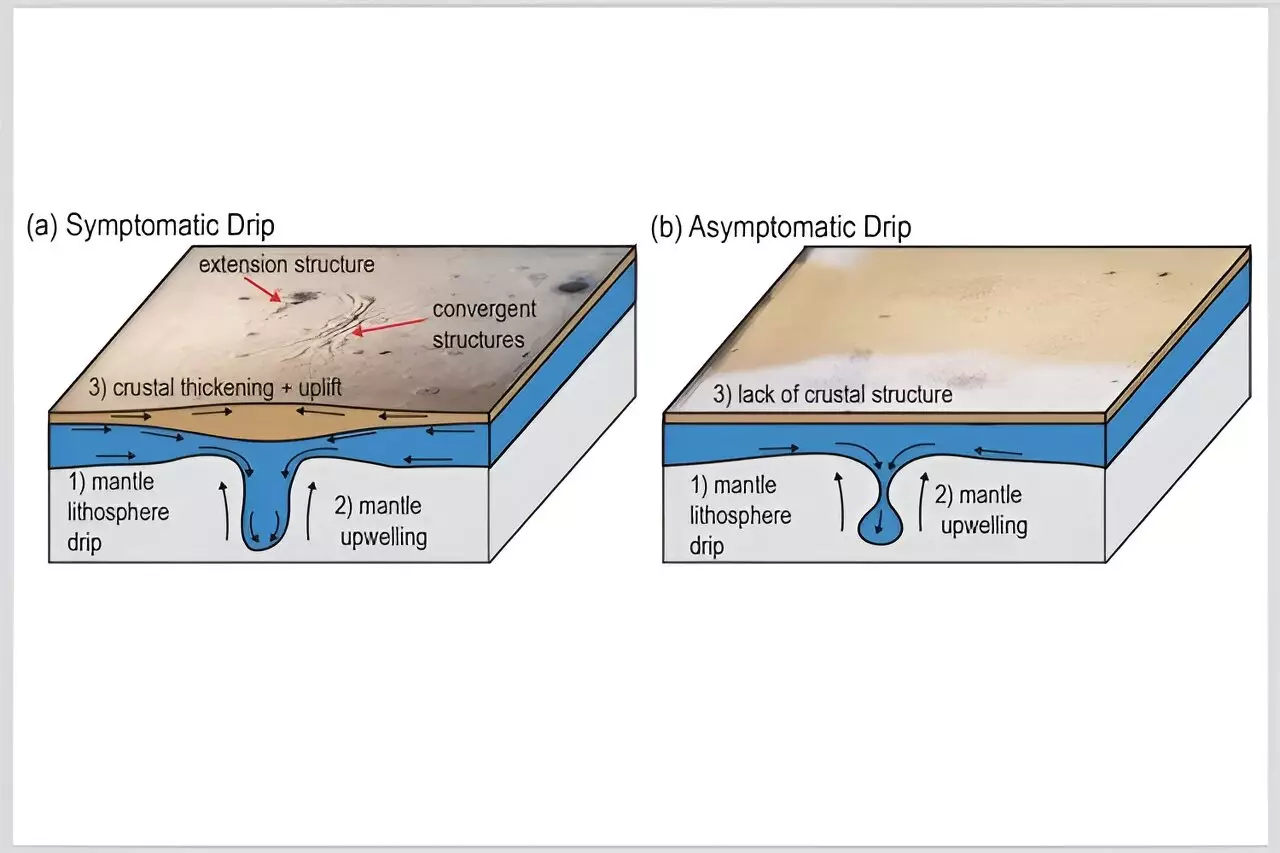The study of geological formations reveals not just Earth’s history but also its dynamic nature, continuously shaped through various tectonic processes. One such investigation led by Earth scientists at the University of Toronto has brought to light the ongoing transformation of the Konya Basin located in the Central Anatolian Plateau of Türkiye. Using advanced satellite data, experimental simulations, and an amalgamation of geological and geodetic analyses, this research opens new avenues in understanding geological processes, not just on Earth but potentially on other planetary bodies as well, like Mars and Venus.
At first glance, the Konya Basin appears to be a product of conventional geological forces. However, the team’s findings suggest a deeper, more complex interaction occurring beneath the surface. Julia Andersen, the lead researcher and a Ph.D. candidate at the University of Toronto, highlighted, “Looking at the satellite data, we observed a circular feature at the Konya Basin where the crust is subsiding or the basin is deepening.” The observation presented a distinctive challenge for interpretation, prompting a thorough examination of underlying geophysical structures. The discovery of a seismic anomaly in the upper mantle further indicated a thickened crust laden with high-density material, pointing to significant geological activity at work.
The team’s work is pivotal in elucidating the role of “lithospheric dripping” in the formation and evolution of geological basins. This phenomenon denotes the detachment and descent of dense rock fragments from the lithosphere into the mantle, causing surface consequences such as basin formation and crustal folding. As these heavy materials sink, gravitational forces could dramatically alter the landscape, challenging our understanding of traditional plate tectonics.
Comparative Studies: Arizaro Basin and Beyond
What makes this study even more influential is its relevance to other geological settings. The researchers pointed to their earlier work on the Arizaro Basin in the Andes, demonstrating that the lithospheric dripping phenomenon is not localized but a global geological process. Their findings suggest that the dynamics at play in the Konya Basin could similarly explain tectonic activities elsewhere, such as in mountainous plateaus around the world.
Moreover, the research builds a compelling case for a connection between the processes of plateau uplift and basin formation. Russell Pysklywec, a co-author of the study, succinctly stated, “We now see the process is not a one-time tectonic event.” This indicates that the geological processes at work are iterative, with initial events spawning further geological activities—what they call “daughter events.” As a result, we see subsidence in the Konya Basin occurring hand-in-hand with the continuous uplifting of the Central Anatolian Plateau, creating an intriguing juxtaposition of geological processes.
The Experimental Backbone of the Study
The published research in *Nature Communications* included meticulously designed laboratory experiments to simulate and observe lithospheric dripping. Researchers constructed analog models, filling a plexiglass tank with specially selected materials that mimic the Earth’s layered structure. By introducing a high-density seed into this model, the team was able to visualize the drip phenomenon as it unfolded.
Capturing images every minute, the researchers monitored the effects of the primary and secondary drips. They noted that, interestingly, while the primary drip showed significant potential to alter surface topography, the subsequent secondary drip initiated distinct subsidence without horizontal displacement—a finding that challenges traditional models of tectonic activity.
The implications of this study extend beyond the geology of Türkiye. By proposing a new category of tectonic activity—one differing fundamentally from classical plate tectonics—we gain insights into the geological processes that may occur on other planets with non-Earth-like lithospheres. If similar mechanisms exist on Mars or Venus, it could radically change how we approach planetary geology and our understanding of such celestial bodies.
Ultimately, this research on the Konya Basin not only enriches our comprehension of terrestrial processes but serves as a pivotal reference point for astrogeological studies. The cyclical nature of these geological phenomena underlines the necessity for ongoing research in understanding our planet’s evolution and drawing parallels with other worlds. Understanding the delicate interplay of uplift and subsidence, not just on Earth but across the universe, could open new horizons in both geological science and planetary exploration.

